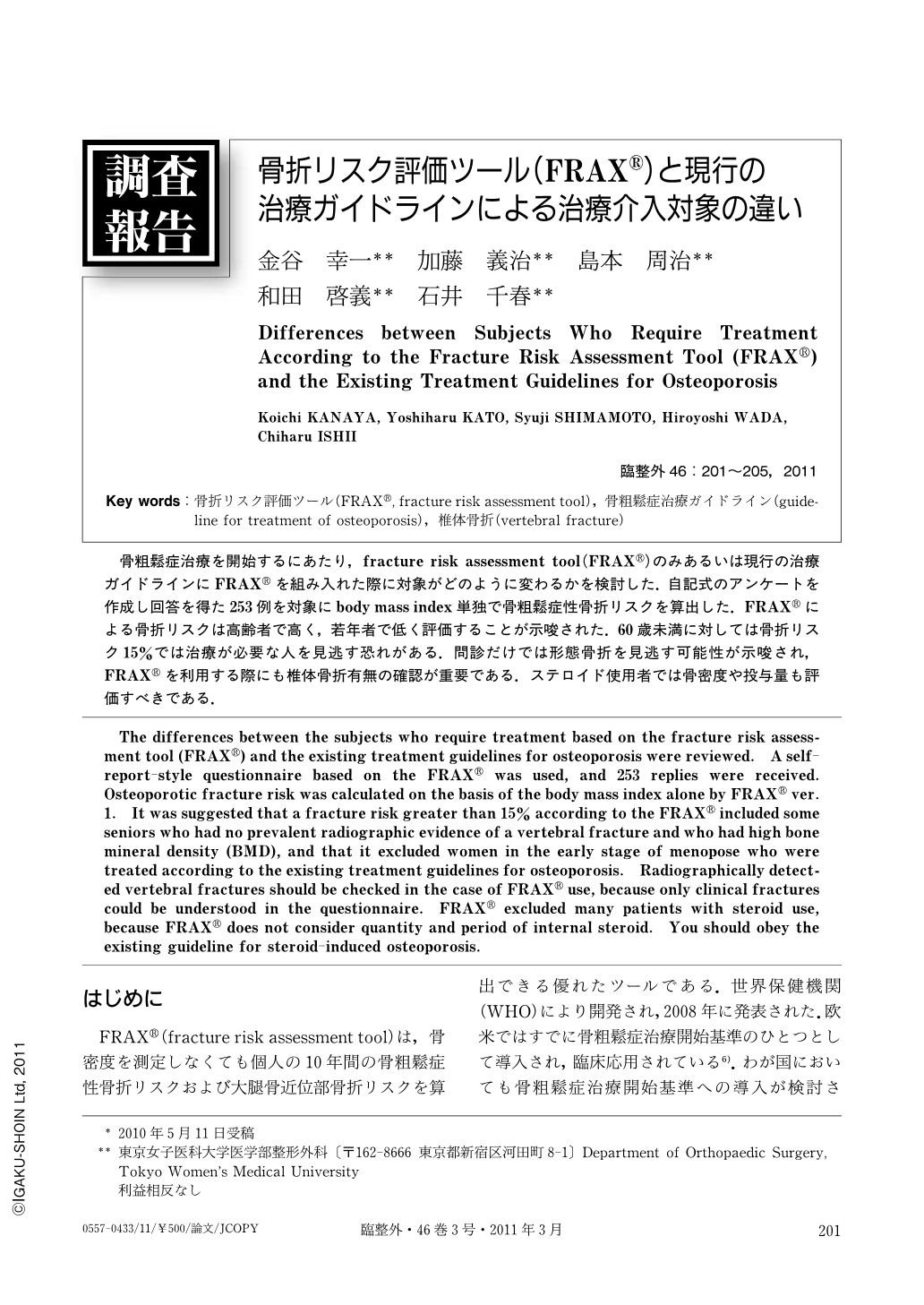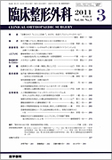Japanese
English
- 有料閲覧
- Abstract 文献概要
- 1ページ目 Look Inside
- 参考文献 Reference
骨粗鬆症治療を開始するにあたり,fracture risk assessment tool(FRAX®)のみあるいは現行の治療ガイドラインにFRAX®を組み入れた際に対象がどのように変わるかを検討した.自記式のアンケートを作成し回答を得た253例を対象にbody mass index単独で骨粗鬆症性骨折リスクを算出した.FRAX®による骨折リスクは高齢者で高く,若年者で低く評価することが示唆された.60歳未満に対しては骨折リスク15%では治療が必要な人を見逃す恐れがある.問診だけでは形態骨折を見逃す可能性が示唆され,FRAX®を利用する際にも椎体骨折有無の確認が重要である.ステロイド使用者では骨密度や投与量も評価すべきである.
The differences between the subjects who require treatment based on the fracture risk assessment tool (FRAX®) and the existing treatment guidelines for osteoporosis were reviewed. A self-report-style questionnaire based on the FRAX® was used, and 253 replies were received. Osteoporotic fracture risk was calculated on the basis of the body mass index alone by FRAX® ver.1. It was suggested that a fracture risk greater than 15% according to the FRAX® included some seniors who had no prevalent radiographic evidence of a vertebral fracture and who had high bone mineral density (BMD), and that it excluded women in the early stage of menopose who were treated according to the existing treatment guidelines for osteoporosis. Radiographically detected vertebral fractures should be checked in the case of FRAX® use, because only clinical fractures could be understood in the questionnaire. FRAX® excluded many patients with steroid use, because FRAX® does not consider quantity and period of internal steroid. You should obey the existing guideline for steroid-induced osteoporosis.

Copyright © 2011, Igaku-Shoin Ltd. All rights reserved.


